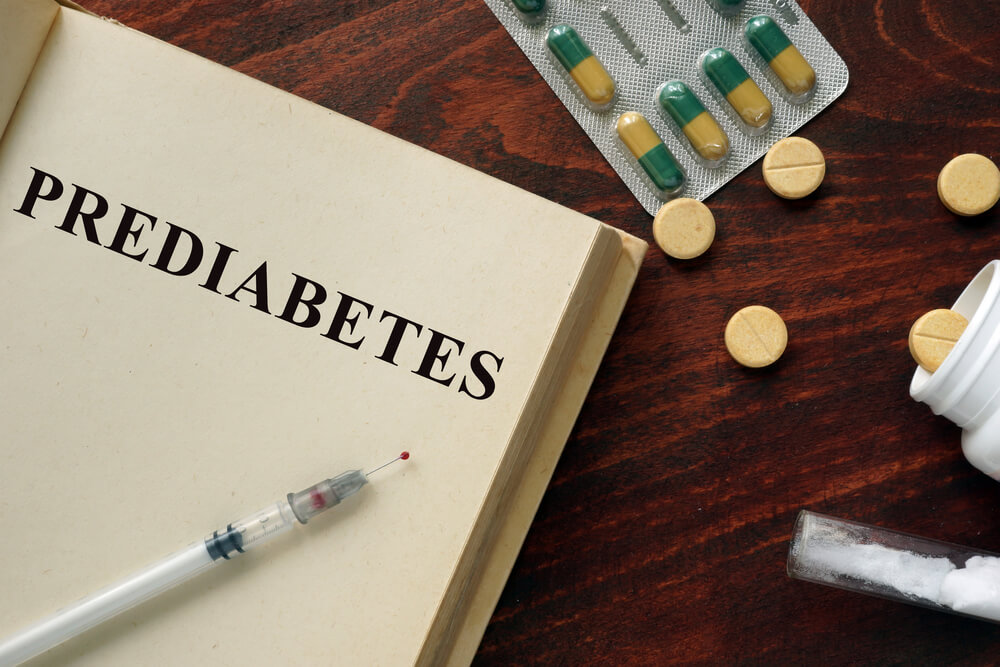Prediabetes: What does it mean and what should you do about it?
Have you recently been told that you may have prediabetes? Being told that you have prediabetes is a sign that certain things in your life should probably change. It doesn’t mean that you are 100% going to develop type 2 diabetes, but it does mean that you could be on your way to it. Prediabetes means that your blood sugar is higher than normal, but not severe enough to be considered diabetes.
Today we’re going to talk not only about prediabetes symptoms but also prediabetes treatment. Not to mention what you should eat if you have received news that you could be on your way to diabetes, following a prediabetes diet can reduce your risk. Continue reading to learn more.
Prediabetes Symptoms
Prediabetes symptoms commonly do not exhibit themselves self through visible symptoms although there are a few signs that you may notice if you are at risk, or already have, type 2 diabetes. According to the Mayo Clinic, symptoms of type 2 diabetes risk are noticed by darkened skin in areas like the neck, armpits, elbows, knees and knuckles. Other signs and symptoms of type 2 diabetes can be:
- Blurred Vision
- Fatigue
- Frequent Urination
- Increased Thirst
The Centers for Disease Control and Prevention mention that although symptoms are not easily noticed there are a few risk factors that can be taken into consideration in regards to prediabetes:
- If you are overweight
- If you are over 45 years old
- If you have a parent, or sibling with type 2 diabetes
- If you exercise less than 3 times a week
- If you have ever had gestational diabetes
- If you have given birth to a baby who weighed more than 9 lbs. (women)
- If you have polycystic ovary syndrome
Prediabetes Treatment
Prediabetes treatment comes in the form of prevention through healthy choices in your lifestyle. These choices can help your blood sugar levels remain from rising or even lower. There are a few things you can do in order to take steps towards type 2 diabetes prevention.
Food – make the right choices. Eat food that is healthy, low in fat and calories and high in fiber. You should be choosing things to eat like vegetables, fruits and lean proteins.
Exercise – try to add more exercise in to your weekly plans. Try to add around an hour a week, or more. A little exercise never hurt anyone!
Weight – If you have excess weight, or are over weight, it’s important to try and loose 5 – 10 % of your body weight. Loosing the excess weight can significantly lower your risk for type 2 diabetes. Not only will you look better but you will feel better and your body will thank you
Bad Habits – if you are a smoker, you should seriously consider quitting.
Medications – speak to your doctor about what medications you should be taking for your particular health conditions. Medications may also aid lowering your risk for diabetes.
The Mayo Clinic also mentions alternative medicine as a type of prevention therapy for type 2 diabetes. It’s best to do your own research and make sure that what you choose to do is right for you, maybe even speak to your doctor about alternative medication choices. The following are some of the alternative therapies that could help with prevention but isn’t 100% proven:
- Banaba
- Cassia Cinnamon
- Fenugreek
- Ginseng
- Gymnema
- Magnesium
- White Mulberry
Prediabetes Diet
If you have been given the news that you have prediabetes, I’m sure that you’ve heard that now it’s time to eat right & eat healthy. Here we’re going to give you a few tips on eating healthy and eating the right types of foods on a prediabetes diet.
- Don’t drink anything sugary! Avoid it at all costs
- Watch portion sizes and stop eating junk food
- Eat foods that have high fiber: veggies and fruit
- Eat fat, but the right kind: olive oil, nuts, seeds, avocado, reduced fat cheese, non-fat yogurt
- Drink alcohol moderately
- Eat lean meat: Cut off any fat that you can see on your meat, add fish to your diet, choose chicken without the skin and don’t fry anything.
- More water: drink plenty of it, keep your body hydrated!
Sources:
https://www.cdc.gov/diabetes/basics/prediabetes.html
https://www.mayoclinic.org/diseases-conditions/prediabetes/diagnosis-treatment/drc-20355284
https://www.mayoclinic.org/diseases-conditions/prediabetes/symptoms-causes/syc-20355278
https://www.everydayhealth.com/type-2-diabetes/prediabetes/diet/

